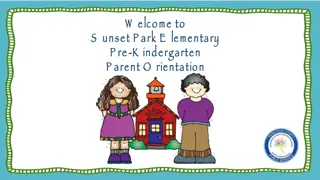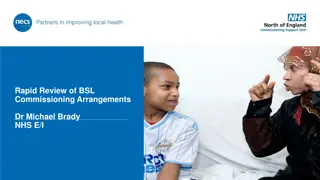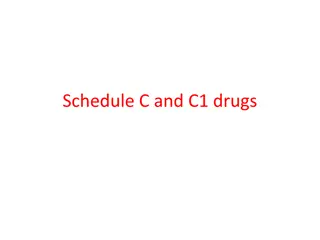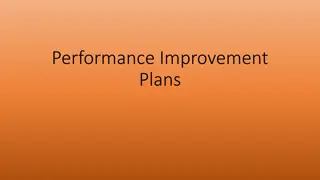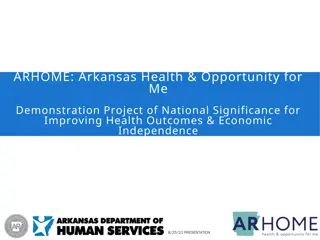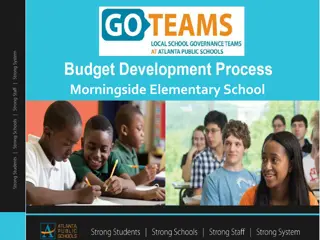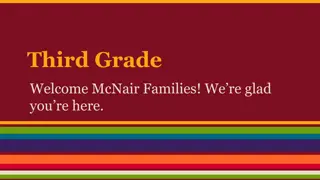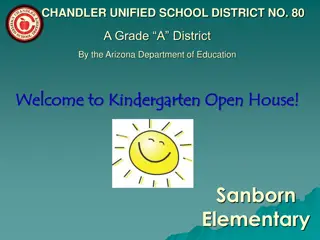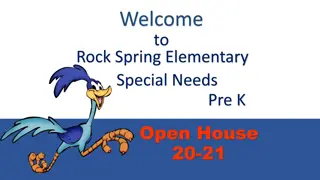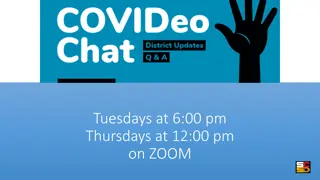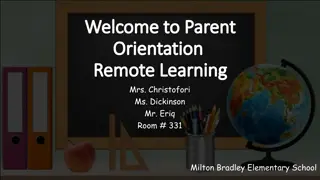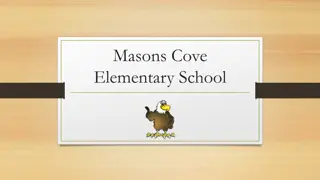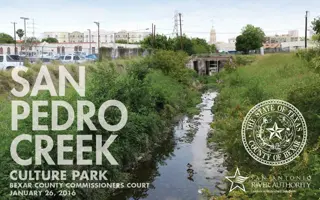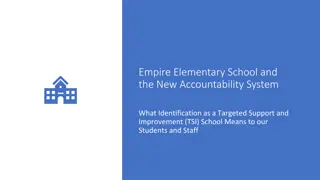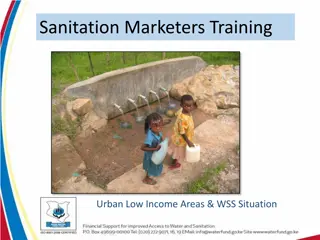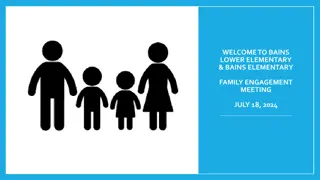Elementary Special Areas Schedule Review and Improvement Project
In 2010-2011, a budget reduction prompted the Elementary Special Area Study Team to create a new schedule that resulted in cost savings. The team reconvened in 2011-2012 to implement a revised schedule, leading to a reduction in sections and reallocation of resources. Through interest-based problem solving and consideration of guiding values, the team aimed to enhance the special areas schedule for students while being fiscally responsible and research-based.
Download Presentation

Please find below an Image/Link to download the presentation.
The content on the website is provided AS IS for your information and personal use only. It may not be sold, licensed, or shared on other websites without obtaining consent from the author.If you encounter any issues during the download, it is possible that the publisher has removed the file from their server.
You are allowed to download the files provided on this website for personal or commercial use, subject to the condition that they are used lawfully. All files are the property of their respective owners.
The content on the website is provided AS IS for your information and personal use only. It may not be sold, licensed, or shared on other websites without obtaining consent from the author.
E N D
Presentation Transcript
HISTORY 2010-2011 Budget reduction identified for the Special Areas. Elementary Special Area Study Team was convened to create a schedule that resulted in a reduction of costs for special areas. A decision was made to implement a once a week, 45 min. special area model 2011-2012 New schedule was implemented. Individual special areas met and provided feedback on the new schedule. Resulted in the reduction of sections for a full time employee (31- 29) and allocation of technology sections for Teacher Librarians. Decision was made to reconvene the Elementary Special Area Study Team during the 2012-2013 school year.
PURPOSE/ TASK Examine the current special areas schedule (Art, Library, Music and PE) and consider any possibilities that may improve upon our current system and result in a positive impact for students. Following the failure of Prop. 204, this task was amended to include the phrase consider any cost neutral possibilities .
TEAM MEMBERSHIP The team was selected through an application process. The goal was to create a balanced team with representation from stakeholder employee groups. The team consisted of: Eight Elementary Special Area Teachers Five Classroom Teachers (including Special Education) One Elementary Student Advisor One Elementary Assistant Principal One Elementary Principal One District Department TOSA Two Facilitators (Elementary Principal and Assistant Director)
INTEREST BASED PROBLEM SOLVING Interest Based Problem Solving is a structured process by which participants work to solve problems while simultaneously fulfilling their own needs and attempting to satisfy the needs of others. This approach provides teams with a framework where all participants can be focused on a specific goal or purpose. In this case, our goal was to identify the best possible special area schedule for Kyrene kids. As part of this process the team spent a significant amount of time examining and discussing Communication Styles Positive aspects of the current special areas schedule Challenging aspects of the current special areas schedule
GUIDING VALUES The team, through an involved process, identified the guiding values for our work. As these were developed, all members of the team understood that these values were what all models would be compared to in order to determine the alignment of the model to the values. Students were held as the focus of all of our conversations. All conversations were guided by the question, What is best for Kyrene kids? Guiding Values: The special area schedule considers the developmental needs of all Kyrene students, while maintaining the differences and integrity of each program. Art, PE, Music and Library are highly regarded within the Kyrene community. Special area sections (number of sections taught by a full time employee) does not increase. The special area schedule provides (all) teachers adequate amount of time to teach their adopted curriculum which promotes student achievement. The specials schedule is fiscally responsible, budget neutral and sustainable for all sizes of schools. All teachers (Classroom teachers & Special Area) must have effective and efficient planning time. The special area schedule is based on current research.
RESEARCH The team examined a variety of research documents that were provided to all members through a Google site. The team examined: Previous year survey regarding the special areas schedule Best practice documents from all disciplines Community Survey conducted in the Spring of 2012 Arizona State Standards for Content Areas In addition, many team members did additional research- contacted schools and other organizations for ideas and input.
POSSIBILITY THINKING Once the background work was done, the group split into small groups to begin engaging in possibility thinking. Groups were charged with putting as many different ideas on the table as they could possibly think of. This process is similar to brainstorming. All ideas were valued and put forward to the team for development.
POSSIBILITY MODELS Current Model 2 Week Rotation AB Quarter Rotation 6 Day Rotation Version 1 6 Day Rotation Version 2 K-2 Change TWOTB (Thinking Way Outside the Box)
MODEL DEVELOPMENT Possibility models were fleshed out and applied to several school settings to see how this actual schedule would work in a school. School size was considered and models were applied to different sizes of schools to see what impact that would have on the schedule. This allowed us to examine the need for travel both regionally and district wide, what impact the special area schedule would have on the master schedule for the school, what changes this would result in for traveling special area teachers, and other considerations as the team identified them.
IDENTIFYING THE STRENGTH OF POSSIBILITIES Team members then took those fleshed out models and compared them to the guiding values that had been created at the beginning of the process. Each schedule was compared to each value and assigned a numerical rating. These ratings were then used to help the team examine the viability of each possibility and determine if the model was a good match to the values that were identified at the beginning of the process. Model Model Average Score Average Score (Based on Values) (Based on Values) Current Model Current Model 27.3 27.3 2 Week Rotation 2 Week Rotation 26 26 AB Quarter AB Quarter Rotation Rotation 23.4 23.4 6 Day Rotation 6 Day Rotation- - Version 1 Version 1 22.3 22.3 6 Day Rotation 6 Day Rotation- - Version 2 Version 2 21.5 21.5 K K- -2 Change 2 Change 21.4 21.4 Thinking Way Thinking Way Outside the Box (TWOTB) Outside the Box (TWOTB) 18.2 18.2
SEEKING STAKEHOLDER FEEDBACK Members of the Elementary Special Area Program Study presented information regarding their work to Art, Music, Library, and Physical Education teachers. Members of the Elementary Special Area Program Study presented information regarding their work to the K-8 Study Team. Through these meetings and through the website, the team collected feedback and questions from meetings and via the website. The Elementary Special Area Program Study team came back together in early February to review all the feedback and questions. The team discussed all of the feedback and determined that the original conclusion remains the recommendation of the group.
CONCLUSIONS Benefits versus Costs When we got to the end of the process, none of the viable, cost neutral solutions that matched with our values provided enough benefit for teachers, students, curriculums, or schools to make it worth the change that would be required to implement any of the possibilities that were considered. Given the current financial situation in education, it is the opinion of the Special Area Study Team that the current, existing schedule provides the best opportunity for students to receive instruction in each of the special areas.
ADDITIONAL RECOMMENDATIONS In addition to examining models, several other recommendations came from the process. These items are things that the team valued, but either did not apply to the special area schedule directly, or are issues that the team felt were significant, but need to be resolved outside the work of this team. It would be the recommendation of this team that other groups are utilized to work on the resolution of the following items. All schools will have the materials needed to teach the curriculum for each of the special areas. The special area schedule should provide opportunities for all students to participate in special area events. All special area teachers will continue to be assigned a home school and all schools should have at least one home teacher in at least one of their special areas. Clarification needs to be reached about access to special areas by our special needs populations such as preschool, ED and DD classrooms to ensure consistency between school sites. At least one special area teacher would participate on each individual site s master schedule team. Any changes should be communicated clearly and accurately and in a timely fashion.
THANK YOU Thank you for bringing us together to do this very important work. It was a pleasure, and we as a team feel that we were productive and worked together in a respectful way that allowed for honest and open dialogue. As we move forward into the future and as our budget situation becomes more stable, this team would welcome the opportunity to come back together to continue this conversation and begin to talk about how to strengthen and expand our special area opportunities for students.


